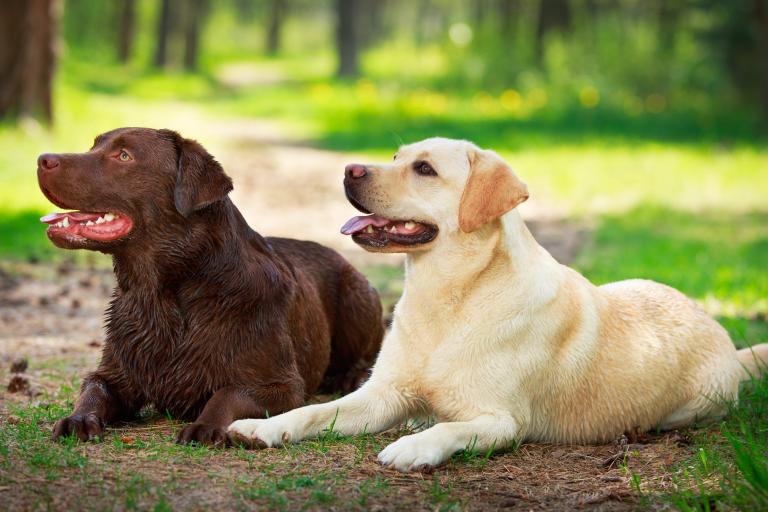Skeletal Dysplasia 2 (SD2 Labrador)
Skeletal dysplasia 2 (SD 2) in Labrador Retrievers is a form of dwarfism in which the body size is normal but the legs are on average 6 cm shorter.
The inheritance is autosomal recessive.
Genetic Test: available in Shop
Symptoms
- Dwarfism
- Shortened legs (on average 6cm shorter than normal)
- Often the front legs are more affected than the hind legs
- Size of the body "normal"
General Information
- Skeletal dysplasia 2 (SD 2) is caused by a mutation in the COL11A2 gene, which codes for collagen, which is important for skeletal structure.
- As a result, the function of the collagen is slightly affected and mild dwarfism occurs.
- In Labrador Retrievers there is generally a wide variation in body size, so it is often difficult to distinguish SD2 affected dogs from "normally small" dogs.
- Affected dogs are not reliably identified by body proportions alone, but by genetic testing.
Test Information
This mutation test detects a change in a single base pair (c.143G>C) in the COL11A2 gene.
Test in Shop
Also in the:
Genotype and Lab Report
Inheritance: autosomal recessive.
→ The hereditary disease only occurs if both alleles of the gene are affected by the mutation (sd2/sd2). Dogs that have only one allele with the causative mutation (N/sd2) are clinically healthy carriers.
Genotypes:
N/N = genetically normal
The dog has no predisposition for SD2 and therefore cannot pass it on to its offspring.
N/sd2 = a carrier
The dog is a clinically healthy carrier. The variation is passed on 50% to the offspring, which are also carriers.
sd2/sd2 = affected
The variation is passed on 100% to the offspring. The offspring are carriers or affected.
Recommendations
- Carrier animals can be bred to normal animals (N/sd2 x N/N). Before using the offspring in breeding, it should be tested whether they are normal or carriers.
- Mating two carrier animals (N/sd2 x N/sd2) should be avoided because there is a 25% chance that the offspring will be affected.
- Affected animals (sd2/sd2) should be excluded from breeding.
Literature
Frischknecht, M., Niehof-Oellers, H., Jagannathan, V., Owczarek-Lipska, M., Drögemüller, C., Dietschi, E., Dolf, G., Tellhelm, B., Lang, J., Tiira, K., Lohi, H., Leeb, T.: A COL11A2 mutation in Labrador retrievers with mild disproportionate dwarfism. PLoS One 8:e60149, 2013. Pubmed reference: 23527306. DOI: 10.1371/journal.pone.0060149
Further information is available at: Online Mendelian Inheritance in Animals.

